Common Themes in Mission and Identity
Grounded in Faith. Advancing Our Mission.
UD's mission and traditions are rooted in the response of Blessed Father William Joseph Chaminade to the chaos of the French Revolution. Chaminade believed that tumultuous time required new methods of spreading the Gospel.
Since our founding in 1850, the University has followed Chaminade's example. When challenges and opportunities arise, we respond creatively while remaining faithful to our mission. We read the signs of the times, strengthen elements of University life that truly embody our mission and find ways to realize our mission more effectively.
Here, we provide a framework for how the University can continue to grow and adapt in response to our changing world, while staying true to our founding mission.
New Times. New Methods.
As a Catholic, Marianist university, we embrace change and transformation.
5 Themes
Are integral for staying true to our mission.
Common Themes in the Mission and Identity of the University of Dayton
This document summarizes more than two years of conversations by faculty, students, staff, administrators and the board of trustees to articulate common themes in the Catholic and Marianist mission and identity of the University of Dayton.
These conversations were guided and periodically summarized by the Mission and Identity Task Force, which was convened from 2010 to 2012. The task force began by reviewing multiple documents on mission and identity produced by the University community over the past 40 years and, through that review, developed a preliminary framework of contemporary issues facing the University and themes of UD's mission and identity. This framework served as a starting point for University-wide conversations during the spring semester of 2012. The task force organized multiple conversations with faculty, staff, students and trustees and systematically gathered affirmations, critiques and revisions of the preliminary framework. This document provides a major revision of the preliminary framework based on the responses of the spring conversations of 2012.
The purpose of this document is to help faculty, staff, students, trustees and other University stakeholders appreciate the Catholic and Marianist mission and identity of the University of Dayton. The task force endeavored to state the themes of the Catholic and Marianist mission and identity of the University in contemporary language and in a way that would help the University community further clarify and focus its vision of excellence and incorporate these themes into its educational program.
Mission and Identity Task Force, 2010-12
Una M. Cadegan, Ph.D.
History
Maura S. Donahue, Ph.D.
Religious Studies
Dennis M. Doyle, Ph.D.
Religious Studies
Daniel Eylon, Ph.D.
Chemical and Materials Engineering
William M. Fischer, J.D.
Vice President for Student Development
Father James F. Fitz, S.M.
Vice President for Mission and Rector
Liaison with Board, President and Provost
Brother Raymond Fitz, S.M., Ph.D. (Co-chair)
Ferree Professor of Social Justice
Father David Fleming, S.M., S.T.L., Ph.D. (through June 2011)
Religious Studies, UD, Deepahalli
Brother Victor M. Forlani, S.M., DBA
Center for the Integration of Faith and Work
Elizabeth F. Gustafson, Ph.D.
Associate Dean, School of Business Administration
Kathy Harmon
Dean, Admission and Financial Aid
Patricia A. Johnson, Ph.D.
Alumni Chair in Humanities
Kathryn A. Kinnucan-Welsch, Ed.D.
Associate Dean, School of Education and Allied Professions
Father Joseph F. Kozar, S.M., Ph.D.
Religious Studies; Office of Mission and Rector
Paul J. Morman, Ph.D. (through December 2011)
Dean Emeritus, History
David O'Brien, Ph.D.
University Professor of Faith and Culture
Patrick F. Palermo, Ph.D.
History
Margaret F. Pinnell, Ph.D.
Assistant Dean, Mechanical and Aerospace Engineering
Lori E. Shaw, J.D.
Dean of Students, School of Law
Crystal C. Sullivan
Director, Campus Ministry
Paul M. Vanderburgh, Ed.D. (Co-chair)
Associate Provost and Dean, Graduate, Professional and Continuing Education
Joan McGuinness Wagner
Office of Mission and Rector
Father Christopher Wittmann, S.M. (through June 2011)
Director, Campus Ministry
The University has responded to new challenges and opportunities by expanding the scope of its programs and the size of the campus and instituting many other changes. Yet, in the midst of all these changes, the University has sustained a creative fidelity to its founding mission and to enriching the beliefs and convictions that support this mission.
The University of Dayton's history is one of perseverance, tenacity, ingenuity and transformation. The school began with an act of faith more than 170 years ago, and our Marianist spirit continues to drives us to bravely face the unknown, engage in exploration and make new discoveries.
Marianist Roots
The University of Dayton's educational mission and traditions are rooted in Blessed Father William Joseph Chaminade's response to the chaos of the French Revolution. Chaminade believed that this new situation required new methods of spreading the Gospel. His new method was based on two insights. First, he saw a special role for Mary, the mother of Jesus, in this endeavor. With her "yes" to be the mother of Jesus Christ, son of God, she had a special mission of incarnating Christ and his kingdom into the world. Second, Chaminade believed that Mary's mission, bringing Christ into the world, could be realized by developing lay communities that would support their members in their journey of faith as followers of Jesus Christ. In the aftermath of the French Revolution, in collaboration with Marie Thérèse de Lamourous and Adèle de Batz de Trenquelléon, Chaminade created a network of lay communities aimed at rebuilding Christianity within France in 1800.
Two religious communities emerged from these lay communities: the Daughters of Mary (1816) with Adèle as founder and the Society of Mary (1817) with Chaminade as founder. Guided by Chaminade, the early Society of Mary communities focused on rebuilding the Catholic faith in France through a network of elementary schools and a teacher training center. This network of schools had the mission to educate young people in their faith and to develop the knowledge and skills needed to rebuild French society and the French church. This educational mission was supported by beliefs and convictions about how schools should be organized. Then, as now, the Society of Mary wanted to operate schools that set high standards, educated both the mind and the heart, emphasized relationships of care, integrated both the theoretical and practical approaches to learning, and expressed a special concern for the poor. This educational mission and supporting beliefs and convictions were the beginnings of what today we call the Marianist tradition of education.
The first Marianists arrived in the New World in 1849, a year before Chaminade died. The priest and brothers who established what would eventually become the University of Dayton wanted to continue the mission of educating young men to be grounded in faith, developed as whole persons, and well prepared for careers and for leadership in both society and the church. In contemporary language, their intent was to create a learning community that would educate faith-filled persons prepared and committed to lead and serve both country and the church. They did this in a way that adapted to the situation and needs of the emerging Midwest society and its church.
University of Dayton Origins
In their earliest years, the first Marianist missionaries who journeyed to Ohio from the Alsace region in France met the most urgent needs of the Dayton population as they ministered to the sick of Emmanuel Parish during an 1849 cholera epidemic. The leader of this first community, Father Leo Meyer, S.M., met John Stuart, a local farmer whose daughter died of cholera the year before. Stuart wanted to sell his Dayton property and return with his wife to Europe. On March 19, 1850, the feast of St. Joseph, Father Meyer, now joined by Brothers Maximin Zehler, a teacher, Charles Shultz, a cook, and Andrew Edel, a gardener, purchased Dewberry Farm from John Stuart and renamed it Nazareth. Mr. Stuart accepted a medal of St. Joseph and a promise of $12,000 at 6 percent interest in return for 125 acres, including vineyards, orchards, a mansion and various farm buildings. The Marianists paid off the debt in 12 years.
Over the next half-century, St. Mary's School for Boys grew from a one-frame building and 14 primary students to a collegiate institution with an ambitious vision of preparing young men to be leaders. The historic core of campus buildings reflected and facilitated this ambition: Zehler Hall in 1865, the Chapel of the Immaculate Conception in 1869 and St. Mary's Hall, then the tallest building in Dayton, in 1870.
In the ensuing half-century that encompassed two world wars, St. Mary's School became St. Mary's Institute and then, in 1920, the University of Dayton. This shift reflected its close connection with the city of Dayton as well as its desire to claim an American identity for its Catholic students. In the 1930s, women were admitted on an equal basis with men, 40 years before most other Catholic universities allowed. As the Catholic population grew and assimilated, the University expanded its programs in science, engineering and the professions, educating the children and grandchildren of immigrants to participate in the growing affluence that characterized American society.
After the Second World War, the University continued to grow. As the GI Bill and the baby boom increased the numbers of students nationwide, enrollment increased fivefold by 1960. The University adapted to a variety of changes that have clear effects in the present. The establishment of Sinclair Community College and Wright State University decreased local enrollment and moved UD toward becoming a national university. Dramatic changes in the Catholic church, expressed most vividly in the Second Vatican Council (1962-65), led to epic changes in Catholic higher education. Control of the University was entrusted to lay trustees, faculty were hired who were as committed to research as to teaching, and the University began a sustained series of reflections on what it meant to be a Catholic university in this changed world.
Through the presidencies of Brother Raymond Fitz, S.M., (1979-2002) and Daniel Curran (2002-present), the University grew in size, reputation and aspiration. Reclassified by the Carnegie Commission on Higher Education as a research university and committed to the doctoral programs and rigorous faculty research in all areas that classification implies, the University also remains ardently committed to a compelling Marianist vision of undergraduate education. To that end, it engaged in the 1980s and is undertaking again today a process of curricular revision that seeks to integrate liberal learning with professional education in innovative ways that draw on deep traditions. It also has invested heavily, in both financial and human terms, in a residential education that takes advantage of UD's unique student neighborhoods. The University has renewed and strengthened its commitment to the city whose name it chose for its own, as Dayton struggles to adapt to three devastating decades of deindustrialization. At the same time, the University has extended its reach, enrolling students nationally and internationally and preparing them for life in a global society. It has attained national prominence in discussions of Catholic higher education and Catholic intellectual life while continually seeking to deepen and extend a commitment to diversity in all aspects of the University.
While many of the changes that marked the history of the University of Dayton would be unimaginable to those four founders of St. Mary's School for Boys, hopefully they could recognize the persistent intent to adapt and change as needed to create a learning community that would educate faith-filled persons prepared and committed to lead and serve both country and the church. Even though the University has grown to great complexity, these four founders would recognize a focus on excellence, a concern for the whole person by educating both the mind and the heart, relationships of care exemplified by a family spirit, the integration of theoretical and practical approaches to learning, a focus on and a concern for those at the margins of society as enduring hallmarks of Marianist education.
Explore Interactive UD Timeline
Just as previous generations addressed new challenges and opportunities and responded in ways that were creatively faithful to the founding mission of the University, our generation must do the same. We must read the signs of the times and respond in a manner that strengthens those elements of University life that truly embody our mission and create those innovations needed to realize our mission more effectively. We are engaged in a series of conversations that began during the 2004-05 academic year with a University-wide reflection on strategic vision. These initial conversations resulted in The University of Dayton: A Vision of Excellence, presented by the president and provost to the University community in September 2005. This statement provided a strong affirmation of the University as a Catholic and Marianist university.
Vision of Excellence – Statement of Identity
The University of Dayton — Catholic, Marianist, innovative and transformative — is a leader in higher education and one of the pre-eminent Catholic universities in the nation. As a Catholic university, our commitment to rigorous intellectual inquiry and vigorous dialogue is shaped by the insights of Catholic intellectual traditions that form
Catholics and enlighten people of all faiths. These insights ground our convictions that faith and reason illumine one another and that all are created in the image of God. The Marianist tradition of education includes the whole person — spirit, mind and body — connecting liberal to professional education through integrating learning and living
in community. These traditions form distinctive graduates who grow in their faith, pursue lifelong learning and achieve professional success. Educated for adaptation and change, our graduates are particularly well prepared for leadership and service in the communities in which they live and work.As a collaborative endeavor, a University of Dayton education engages and transforms students, faculty and staff. It emphasizes practical reasoning, moral behavior and thoughtful reflection within a diverse and inclusive community committed to the vocation of learning.
Further conversations helped to develop a strategic plan that would allow the University to realize A Vision of Excellence. The conclusions of these conversations were incorporated into Strategic Plan 2006, which was approved by the board of trustees and presented five goals:
- Educate for transformation and prepare a new generation of servant-leaders;
- Cultivate outstanding scholarship, research and artistic creation;
- Strengthen and promote the University's distinctive Catholic and Marianist identity;
- Advance international and intercultural citizenship and engagement; and
- Practice responsible stewardship.
The Strategic Plan was organized around the goal "strengthen and promote the University's distinctive Catholic and Marianist identity" to demonstrate the importance of the mission and identity as we address the critical issues of the early 21st century.
The strategic planning conversations were held concurrently with University-wide conversations led by the Marianist Educational Working group, which resulted in Habits of Inquiry and Reflection: A Report on Education in the Catholic and Marianist Traditions at the University of Dayton in May 2006. The Catholic intellectual tradition and the Marianist charism shaped the report's definition of key learning outcomes for a University of Dayton education, which:
- Seeks knowledge in a sacramental spirit; n Pursues learning in, through and for community;
- Cultivates practical wisdom;
- Forges critical ability to read the signs of these times; and
- Supports discernment of personal and communal vocation.
These distinctive features of the University's Catholic and Marianist mission and identity shape the learning outcomes of its curriculum.
Habits of Inquiry articulated concepts on which The Common Academic Program Proposal was designed. Approved by the Academic Senate in April 2010, the CAP proposal outlines the structure for redesigning the undergraduate curriculum and intentionally incorporates the "key elements of the Catholic intellectual tradition and its Marianist charism." In the CAP proposal, the First Year Humanities Commons presents an integrated set of religious studies, philosophy, history and English courses that "familiarize students with the central concepts and texts of the Catholic intellectual tradition." A series of upper-level courses, expected to strengthen the student’s appreciation of the "Catholic intellectual tradition in significant ways," crosses disciplinary boundaries and includes a faith traditions course, a practical ethical action course, an inquiry course, an integrative course, and a diversity and social justice course.
While the Habits of Inquiry and Reflection conversations were under way, the divisions of Student Development and Campus Ministry created Commitment to Community: Catholic and Marianist Learning and Living (C2C). Founded on the Catholic intellectual tradition and the Marianist tradition of education, C2C outlines principles and personal and social habits that define the norms of learning and living in the University of Dayton community.
In implementing Strategic Plan 2006, the University of Dayton has experienced a strong period of growth — enlarging the campus footprint, building new facilities, increasing enrollment, creating new centers of learning and scholarship, and expanding research. The University faculty is now designing courses for the Common Academic Program. In the 2010-11 academic year, the University president and provost formed the Mission and Identity Task Force, which had as one of its mandates to "engage the University community in a series of conversations that would articulate a shared framework of ideas and concepts for understanding, appreciating and developing the Catholic and Marianist mission and identity of the University given the growing complexity of our university."
The next section of this document summarizes the shared framework — the set of common themes of our mission and identity — that resulted from these conversations.
In October 2000, the board of trustees approved the University mission statement:
The University of Dayton is a comprehensive, Catholic university, a diverse community, committed in the Marianist tradition, to educating the whole person and to linking learning and scholarship with leadership and service.
This mission statement and its shortened form, "Learn, Lead and Serve," have been the touchstones of our reflections on mission and identity.
As a national Catholic university in the Marianist educational tradition, the University of Dayton provides a wide range of excellent educational and research programs and engages in extensive partnerships and service programs. The University provides a residential undergraduate program with a broad range of curricula in the College of Arts and Sciences and in the Schools of Business Administration, Education and Health Sciences, and Engineering. The University offers master's and doctoral degrees, a juris doctorate, and programs of continuing education in selected fields where it has competence and can offer an important service. Scholarship and research for faculty and students is a major emphasis. The University of Dayton Research Institute, a unique asset, allows the University to make a major contribution to the greater Dayton region as an advanced technology hub delivering innovative and practical science and engineering solutions. The University's strong regional, national and international partnerships enable it to contribute its knowledge and its practical expertise to the building up of society and the church.
Educational Traditions
Our mission and identity have their foundation in the beliefs and convictions of three educational traditions:
- independent higher education in the United States
- Catholic higher education and
- Marianist education.
Independent higher education in the United States refers to non-state-supported institutions of higher learning that are authorized by a state charter and governed by a board of trustees. Independent institutions of higher learning are supported mainly by student tuition, private philanthropy, and grants and contracts. Students of independent higher education may receive financial aid and subsidized loans from state and federal sources. Independent higher education's public responsibility to serve society has led this sector to develop many innovative partnerships for learning, social change and economic development.
Catholic universities in the United States are part of the independent sector of higher education. They also share a rich tradition of higher education with Catholic universities around the world. Catholic universities were first created by the church around 1200 in Paris, Oxford and Bologna. Over many centuries, Catholic universities have carried on a dialogue between the Catholic faith and various cultures. The University of Dayton collaborates with other Catholic universities through its membership in the Association of Catholic Colleges and Universities.
The Society of Mary founded three educational institutions that eventually became Catholic universities in the United States: University of Dayton (Ohio, 1850), St. Mary's University (Texas, 1852) and Chaminade University (Hawaii, 1883). Through the Association of Marianist Universities, these three universities have collaborated to embody the Marianist educational tradition as independent Catholic universities serving in very different locales and situations.
Although these three educational traditions have different origins and histories, they come together in the mission of the University of Dayton like the different-colored threads in an ornate tapestry. Each tradition complements the others, and at the same time, raises critical questions which, if thoughtfully addressed, enrich the other traditions. Together, these traditions project the spirit and nature of the University of Dayton.
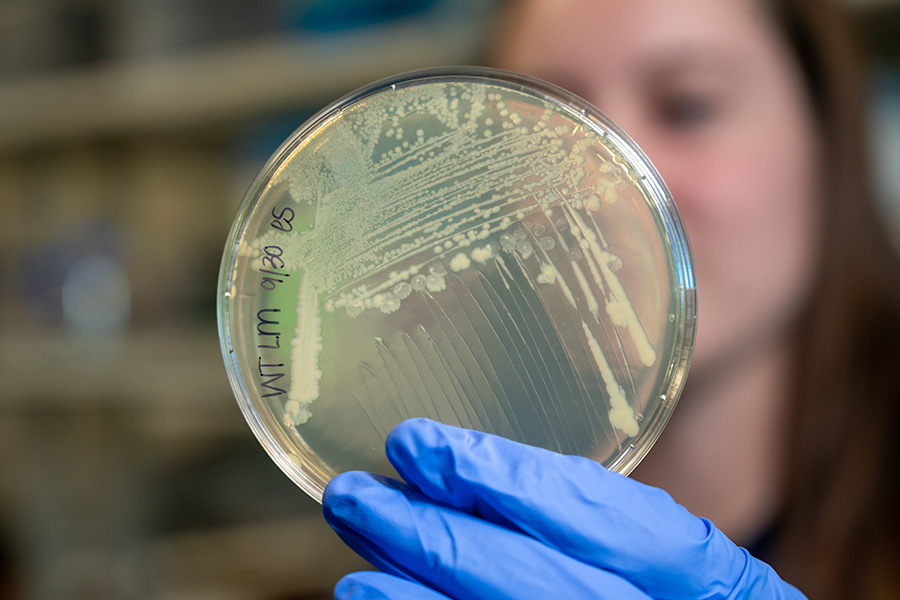
Theme 1
Excelling in Integrated Learning and Scholarship
Through integrated learning and scholarship, we're able to discover, combine and apply what we've learned to answer new questions and solve problems.
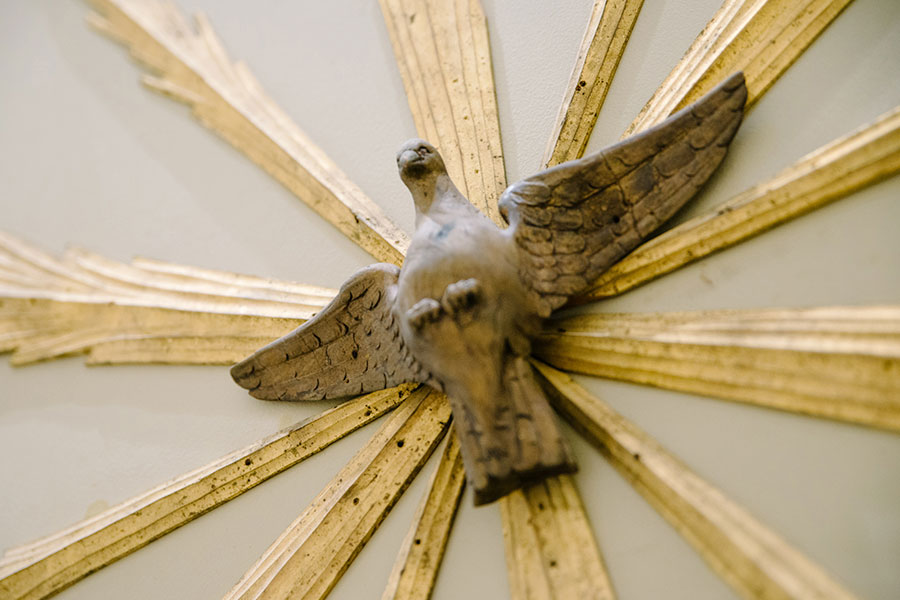
Theme 2
Searching for Truth Grounded in Faith and Reason
The Catholic intellectual tradition dynamically shapes the intellectual inquiry of our University faculty, staff and students.
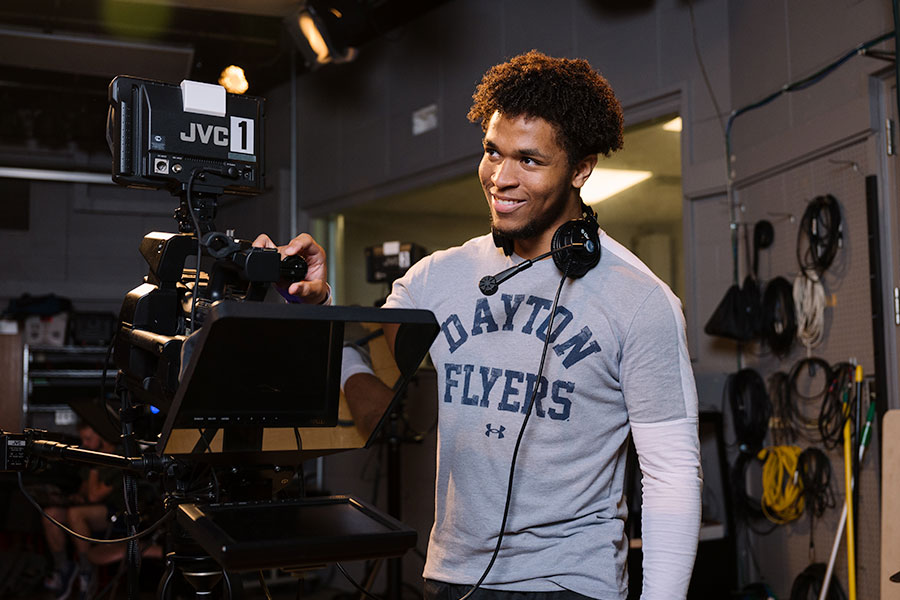
Theme 3
Educating for Practical Wisdom
The virtue of practical wisdom combines practical reasoning, commitment to a moral tradition and practical knowledge.
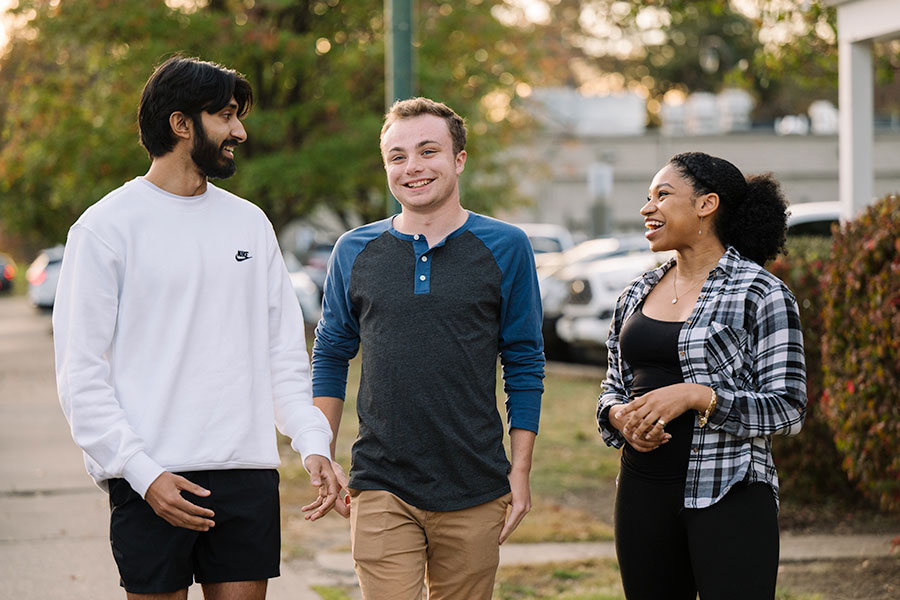
Theme 4
Building Community Across Diversity
Our University's commitment to community can be seen through the meaningful relationships between our students, faculty and staff -- and in our shared sense of a common purpose.
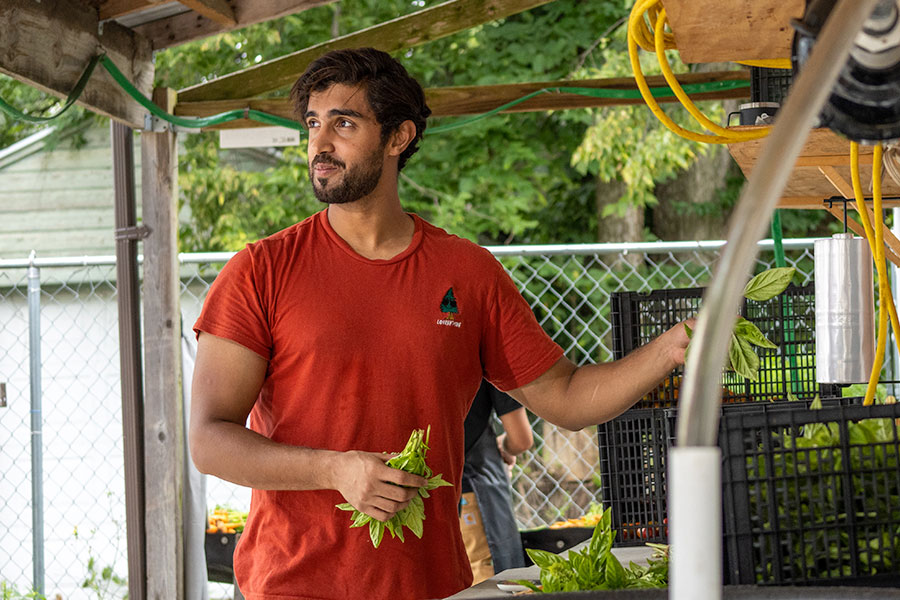
Theme 5
Partnering for the Common Good
Connecting our education with community through civic engagement, we utilize resources and scholarship to create a more hopeful future.